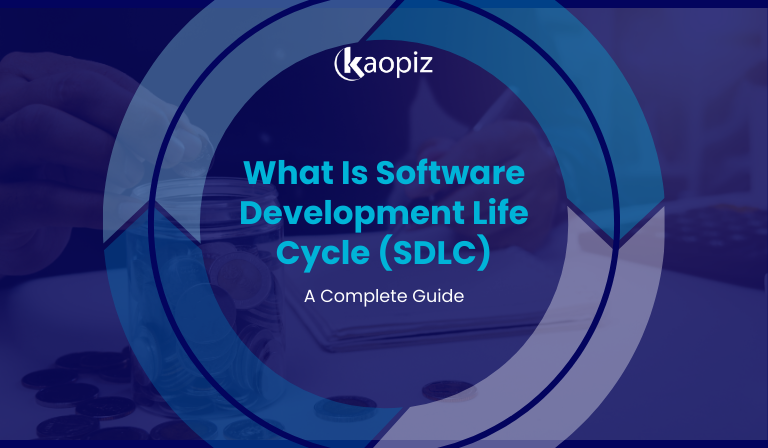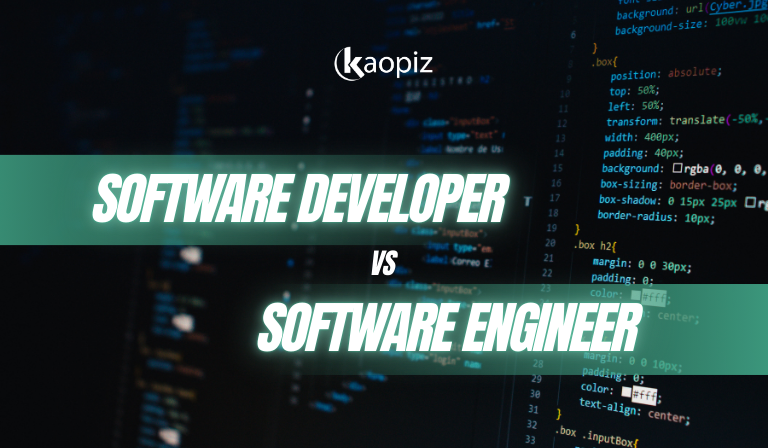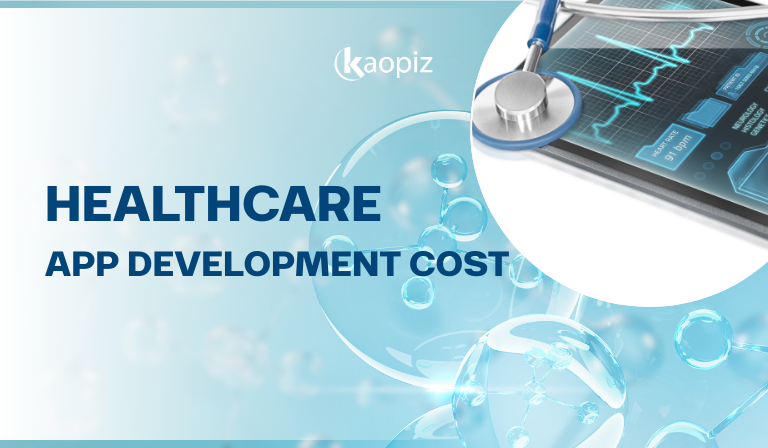Software Development Requirements: Complete Guide and Singapore-Specific Tips (2025)
In today’s fast-paced digital economy, clear and well-documented software development requirements are the foundation of every successful project—especially in a tech-savvy hub like Singapore. Whether you’re building a new mobile app, revamping your internal systems, or applying for a government grant to digitize your processes, having solid requirements ensures your team and development partner are aligned from day one.
This complete 2025 guide will walk you through everything you need to know—from functional and non-functional requirements to agile documentation best practices and local compliance tips. Whether you’re a startup founder, product owner, or enterprise CIO, this guide is your roadmap to building better software—faster, smarter, and more cost-effectively. Let’s dive in!
Table of Contents
- What Are Software Development Requirements?
- Why Are Clear Software Requirements Important?
- Types of Software Development Requirements
- Requirements in Agile vs. Waterfall Projects
- How to Create Software Development Requirements
- Step 1 – Define the Business Goals
- Step 2 – Identify Stakeholders and End-Users
- Step 3 – Gather Initial Requirements
- Step 4 – Prioritize Features and Requirements
- Step 5 – Create Visual Aids
- Step 6 – Write Clear Requirement Statements
- Step 7 – Review and Validate with Stakeholders
- Step 8 – Choose the Right Documentation Format
- Best Practices for Documenting Requirements
- Special Considerations for Software Development Requirements in Singapore
- Kaopiz – Trusted Software Development Partner for Singapore Businesses
- Conclusion
- FAQs
What Are Software Development Requirements?
Software development requirements are the documented needs, features, constraints, and expectations that define what a software system must accomplish. They serve as the blueprint for developers, designers, testers, and business stakeholders to understand what the product should do and how it should behave.

These requirements bridge the gap between business goals and technical implementation. They ensure that everyone—from the product owner to the development team—shares a common understanding of what is being built, why it’s being built, and how success will be measured.
Why Are Clear Software Requirements Important?
Clear documents and software developer requirements are the backbone of any successful software development contracts. They define what needs to be built, how it should function, and why it matters, ensuring all stakeholders share the same vision from the start.
Without well-defined requirements, teams risk miscommunication, project delays, budget overruns, and unsatisfied users. Here’s why clear requirements matter:
- Align Business and Technical Teams: They create a shared understanding between business stakeholders, developers, designers, and testers. Everyone knows the goals, features, limitations, and expectations.
- Enable Accurate Budget and Timeline Estimations: Precise requirements help teams scope the project accurately. This allows for realistic cost projections and helps avoid scope creep.
- Improve Quality and Reduce Rework: When requirements are documented clearly, developers are less likely to make incorrect assumptions. This reduces bugs, revisions, and post-launch fixes.
- Support Agile Development and Iteration: In agile projects, evolving user stories and sprint backlogs rely on clear initial requirements. They provide the structure needed to iterate quickly without losing sight of business goals.
- Strengthen Vendor and Client Collaboration: For companies outsourcing development, clear requirements reduce friction, enable better vendor comparison, and ensure accountability.
- Meet Legal and Regulatory Obligations: Poorly defined requirements may overlook key compliance issues or industry-specific standards.
Types of Software Development Requirements
Software requirements for website development can be categorized into different types, each playing a distinct role in shaping how a system is designed, built, and evaluated. Understanding these categories helps ensure nothing essential is overlooked, especially in complex projects or when outsourcing to development teams.
In this section, we’ll break down the 6 main types of high-level requirements in software development, along with examples and use cases.

Functional Requirements
Functional requirements describe the specific behavior and functions the software must perform. These typically include features, system interactions, and user actions.
Examples:
- Users must be able to register via email or phone number
- Admins can generate monthly sales reports
- The system sends automated email notifications for password resets
These define what the software does, forming the foundation for UI/UX design, development, and testing.
Non-Functional Requirements
Non-functional requirements define how the software performs rather than what it does. These often cover performance, reliability, security, scalability, and compliance.
Examples:
- The app should load in under 2 seconds on 4G
- The system must support 99.9% uptime SLA
- Data storage and processing must comply with Singapore’s PDPA
In Singapore’s competitive tech scene, performance and security standards are high, especially in fintech, e-commerce, and healthcare domains.
Domain Requirements
These are specific to the business sector or industry. They reflect operational rules, legal constraints, and domain knowledge.
Examples:
- Fintech apps must comply with MAS Technology Risk Management Guidelines
- Healthcare software must encrypt patient data and follow MOH digital health standards
Ignoring domain-specific rules can result in non-compliance and legal issues, particularly in regulated industries.
Business Requirements
Business requirements for software development outline strategic goals. They answer the question: Why are we building this?
Examples:
- Automate 70% of internal reporting tasks
- Enable online booking to reduce customer service load by 50%
- Launch MVP within 3 months to qualify for IMDA funding
These requirements guide feature prioritization and help measure success post-launch.
User Requirements
User requirements describe what the end users need or expect from the system in terms of usability, accessibility, and experience.
Examples:
- The interface must be accessible to elderly users (font size, color contrast)
- The mobile app must support both English and Chinese
- Users should complete checkout in fewer than 5 clicks
In multicultural Singapore, multilingual and mobile-first design is essential for user adoption.
Technical Requirements
Technical requirements for software development define the technological constraints, preferred tools, platforms, and integration points.
Examples:
- The backend must be built using Node.js
- Host the app on AWS Singapore region with auto-scaling enabled
- Integrate with third-party APIs like PayNow or Singpass
Specify software developer language requirements such as Java, Python, JavaScript, or Go, depending on your project’s needs and affect system architecture, scalability, and long-term maintainability.
Requirements in Agile vs. Waterfall Projects
Understanding how requirements are handled in Agile versus Waterfall development is essential for choosing the right approach for your software project. Both methodologies manage requirements differently, and your choice can impact cost, timeline, and product flexibility, especially when working with outsourced teams or applying for government grants in Singapore. Here is the comparison between the 2 approaches:
| Criteria | Waterfall | Agile |
|---|---|---|
| Requirements gathering | All requirements defined upfront before development begins | Requirements evolve throughout the project |
| Flexibility to changes | Low – changes are costly and difficult | High – changes are expected and encouraged |
| Documentation | Heavy – detailed Software Requirement Specifications (SRS) required | Lightweight – user stories, acceptance criteria, product backlog |
| Project planning | Linear – clear start, middle, and end | Iterative – broken into sprints with constant reassessment |
| Best suited for | Fixed-scope projects, compliance-heavy systems (e.g., government, finance) | MVPs, startups, projects with evolving user needs |
| Client involvement | Minimal after the planning phase | Continuous feedback and collaboration throughout |
| Time & cost estimation | Accurate at the beginning, but risky if requirements change | Less precise upfront, but adapts to real-world needs |
| Testing | Done after development | Continuous (every sprint includes QA) |
How to Create Software Development Requirements
Creating clear and actionable software development requirements is essential to building a product that meets both business goals and user expectations. Whether you’re managing an in-house team or outsourcing development in Singapore, this step-by-step guide will help you ensure alignment, reduce costly rework, and set the foundation for successful delivery.
Step 1 – Define the Business Goals
Start by answering the “why” behind the project. What is the primary business objective the software aims to achieve?
Examples:
- Automate 60% of manual reporting
- Launch a B2C app to capture Gen Z consumers in Singapore
- Improve customer retention by 20% through personalized UX
With software development business requirements, make your goals SMART: Specific, Measurable, Achievable, Relevant, Time-bound.
Step 2 – Identify Stakeholders and End-Users
Determine who will use the software and who will influence its success.
- Internal stakeholders: Executives, department heads, IT managers
- End-users: Customers, employees, or partners using the system
- External influencers: Regulators, investors, outsourced vendors
Use interviews, surveys, and workshops to gather diverse insights.
Step 3 – Gather Initial Requirements
Collect input on what the software needs to do (functional requirements) and how it should behave (non-functional requirements). Don’t forget domain-specific or compliance requirements.

If you’re unsure how to gather requirements for software development, here are some sources of requirements:
- Stakeholder interviews
- Existing systems or workflows
- Competitor analysis
- Regulatory frameworks (e.g., PDPA, MAS TRM in Singapore)
Tools: Notion, Jira, Confluence, Excel
Step 4 – Prioritize Features and Requirements
Not all features are equally important. Use prioritization techniques like MoSCoW (Must have, Should have, Could have, Won’t have) or RICE (Reach, Impact, Confidence, Effort).
Focus first on:
- Business-critical features
- MVP scope (especially for startups)
- User-impacting workflows
Step 5 – Create Visual Aids
Use visuals to improve understanding and stakeholder buy-in.
Visual tools:
- Wireframes (Figma, Balsamiq)
- User flows and process diagrams (Lucidchart, Draw.io)
- Mockups or prototypes
These are especially helpful for remote collaboration or when outsourcing development.
Step 6 – Write Clear Requirement Statements
Use concise, testable, and unambiguous language. Follow these example requirements document for software development:
- Functional requirement format: “The system shall allow users to reset their password via email verification.”
- Agile user story format: “As a customer, I want to receive email confirmation after placing an order, so that I know it went through.”
Include acceptance criteria to define what “done” looks like.
Step 7 – Review and Validate with Stakeholders
Before finalizing, walk stakeholders through the documented requirements. Address any gaps or misunderstandings early.
Checklist:
- Business goals reflected?
- Legal/compliance issues addressed?
- User needs validated?
- Technical feasibility confirmed with developers?
Involve both business and technical leads in validation, especially for cross-functional projects.
Step 8 – Choose the Right Documentation Format
Pick the documentation format that matches your system development methods and team preferences.
| Format | Best For | Tools |
|---|---|---|
| Software Requirements Specification (SRS) | Waterfall, RFPs, grant applications | Word, Google Docs |
| User stories & product backlog | Agile teams | Jira, Notion, Trello |
| Visual user journey maps | UX-focused projects | Miro, FigJam |
Best Practices for Documenting Requirements
Once your software development requirements are gathered, how you document them will directly impact how clearly they’re understood, how effectively they’re implemented, and how efficiently your team or vendor can deliver. Follow these best practices to ensure your documentation is clear, actionable, and collaboration-ready.
DO’s
- Keep it concise but complete: Avoid over-explaining or under-defining. Each requirement should be easy to read but leave no room for misinterpretation.
- Use a consistent structure: Whether you’re using user stories, functional specs, or acceptance criteria, stick to one structure throughout the document for easier scanning and implementation.
- Define the minimum requirements for software engineering: Specify platform compatibility, supported browsers, and language constraints.
- Make it collaborative: Use tools like Confluence, Notion, or Google Docs that allow stakeholders to comment and update in real-time.
- Add references, not redundancy: If visuals or other documents are already explained in earlier sections (e.g., wireframes), link to them rather than duplicating them.
- Track changes and versions: Keep a changelog to monitor what was updated, by whom, and when—especially in longer-term or regulated projects.
DON’Ts
- Don’t rely on vague terminology: Terms like “easy to use” or “fast” are subjective. Be specific—e.g., “load time must be under 2 seconds on 4G.”
- Don’t ignore stakeholder feedback: Documentation should evolve with input from both business and technical teams. Finalizing specs in isolation leads to gaps and misalignment.
- Don’t treat it as a one-time task: Requirements aren’t “set and forget.” Update them as the project evolves, especially in Agile environments.
- Don’t write documents no one reads: Long PDFs or scattered spreadsheets don’t help. Keep everything accessible and centralized using shared platforms.
- Don’t mix strategic goals with technical specs: Separate business objectives from implementation details for clarity—use layered documentation when needed.
Special Considerations for Software Development Requirements in Singapore
Singapore’s digital economy is thriving, with strong government support, high internet penetration, and a global reputation for innovation. But developing software for this market requires more than just good code. You need to consider compliance, funding, localization, and cross-border collaboration, all of which should be reflected in your software requirements.
Below are five key considerations when defining software development requirements specifically for Singapore-based projects.
- Data privacy & PDPA compliance: Include requirements for consent management, secure data handling, and user data rights to meet Singapore’s Personal Data Protection Act (PDPA).
- Local outsourcing & cross-border collaboration: Write clear, English-based documentation with visuals to support smooth collaboration with overseas development teams.
- IMDA grant requirements (e.g., PSG): Align requirements with grant criteria—clearly define business outcomes, milestones, and security measures to support government funding applications.
- Bilingual UI/UX (English + Chinese/Malay/Tamil): If applicable, specify multi-language support, toggle features, and localization guidelines to serve Singapore’s multicultural audience.
- Government digitalization roadmap: Highlight how your software supports automation, cloud adoption, or productivity to align with Smart Nation and SMEs Go Digital initiatives.
Failing to plan for these may delay your go-to-market timeline or lead to missed opportunities.
Next, we’ll show you how Kaopiz – one of the best software development companies that supports Singapore-based companies in defining and delivering well-structured, locally compliant software projects.
Kaopiz – Trusted Software Development Partner for Singapore Businesses
At Kaopiz, we help Singapore businesses turn ideas into reliable, scalable, and compliant software solutions. With over a decade of experience and a strong track record in cross-border collaboration, we understand the unique needs of companies operating in Singapore’s fast-paced, innovation-driven environment.

Why Singapore Companies Choose Kaopiz:
- Local Market Experience: We’ve successfully supported Singapore clients across industries like finance, education, logistics, and e-commerce.
- Compliance-Ready Development: Our teams are trained in PDPA, MAS TRM, and IMDA grant requirements, helping clients build solutions that meet regulatory standards.
- Agile, Business-Driven Approach: We combine agile development with clear business analysis, ensuring your requirements evolve with your goals.
- Cross-Border Collaboration Experts: Based in Vietnam, our software applications developers are skilled in translating requirements into scalable, high-performance systems.
- Full-Cycle Services: From gathering and documenting requirements to design, development, testing, and maintenance, we offer end-to-end support.
Our Services Include:
- Business Analysis & Requirements Engineering
- Custom Web & Mobile App Development
- Cloud Migration & DevOps (AWS, Azure)
- AI Development
- Dedicated Development Teams (Staff Augmentation)
Whether you’re building a grant-funded internal system, launching an MVP, or scaling an existing platform, Kaopiz is your trusted IT outsourcing partner. Let us help you define, build, and deliver software that drives real business results.
Conclusion
Defining clear and structured software development requirements is essential for project success, especially in a market like Singapore, where high user expectations, government regulations, and cross-border development partnerships are common.
From aligning PDPA compliance and IMDA grant standards to supporting bilingual UI/UX and agile delivery, well-documented requirements ensure your software meets both business goals and user needs.
Whether you’re launching an MVP, digitizing operations, or outsourcing development, taking the time to gather and document your requirements properly will save time, reduce costs, and lead to better outcomes.
FAQs
- Should I Document Requirements Before Outsourcing Software Development?
- Yes. Clear documentation ensures aligned expectations, accurate cost estimates, and smoother collaboration with outsourced teams. It also helps avoid costly misunderstandings and rework.
- What Is the Difference Between High-Level and Detailed Requirements?
- High-level requirements describe broad business goals and system capabilities. Detailed requirements specify exact features, user interactions, technical constraints, and acceptance criteria.
- How Are Requirements Gathered in Agile Development?
- Agile software development requirements are gathered iteratively through user stories, sprint planning, stakeholder feedback, and backlog refinement. They evolve as the product develops, and user insights emerge.
- Are There Specific Regulations to Follow When Gathering Software Requirements in Singapore?
- Yes. You must consider PDPA for data privacy, and industry-specific standards such as MAS TRM for finance. Requirements should also reflect IMDA grant documentation needs if applying for funding.
- Can I Get Government Funding for Software Development in Singapore?
- Yes. Grants like the Productivity Solutions Grant (PSG) and Enterprise Development Grant (EDG) support digital transformation. Clear, goal-driven requirements are often necessary for grant approval.




















